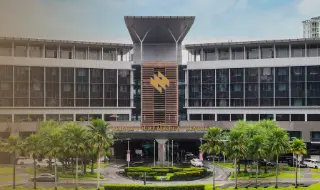Advancement in breast conserving surgery offers hope to breast cancer patients
By Dr. Melissa Tan, Prince Court Consultant Breast and Oncoplastic Surgeon
Receiving a breast cancer diagnosis is a life-changing event but it is crucial to understand that it does not mean every woman has to lose her breasts.

Breast cancer treatment continues to develop and progress in every aspect, and its advancement has led to equal emphasis on both local and systemic treatment resulting in increased number of survivors. Local treatment: involves surgery; and radiotherapy. Systemic treatment involves: antihormone therapy; chemotherapy; targeted therapy; and novel therapy.
Early detection of breast cancer can save lives and breasts. Research stated that breast conserving surgery (removing cancer lump as a form of or medically known as wide local excision) and radiotherapy has better overall survivor early breast cancer (Stage I, II and III) with better quality of life for patient and better reported outcome from patients. Breast surgical treatment has gradually evolved in the attempt of breast conserving surgery where possible.
Understanding mastectomy
Mastectomy is a procedure where 90-95% of breast is removed. Mastectomy can never be 100% of breast tissue removal due to the anatomy of the breast. Women who undergo mastectomy is usually due to the following reasons:
- The surgeon is not able to remove the breast cancer and leave the patient with a cosmetically acceptable breast;
- Women cannot have or choose not, or want to avoid radiotherapy;
- Women choose to have mastectomy; or
- Women have genetic mutation associated with high risk for developing more breast cancers;
- Late presentation of breast cancer
- Rare type of breast cancer called inflammatory breast cancer

Generally, there are four types of mastectomies:
- Simple mastectomy - Removal of the breast tissue without reconstruction. Patients have the option of using external breast prosthesis in their bra.
- Goldilocks’ mastectomy – Removal of the breast tissue. Then, the remaining fatty tissue and skin are formed into a breast.
- Mastectomy (+/-nipple sparing and +/- skin sparing or reducing) with breast implant reconstruction. If is done immediately after mastectomy, skin and maybe the nipple of the breast can be kept and the removed breast tissue space is replaced with breast implant.
- Mastectomy (+/-nipple sparing and +/- skin sparing or reducing) with autologous reconstruction means reconstruction using patient’s own tissue usually from the back or tummy tissue.
What is oncoplastic breast surgery?
Traditionally, women with bigger cancers (larger than 4 or 5cm), or when breast cancer size is bigger than 20% of the breast size would be offered mastectomy. Thanks to the advancement of oncoplastic surgery, breast cancer patients can have more breast conserving surgical options to choose from. Most small breast cancers can be removed with lumpectomy or wide local excision with or without using simple oncoplastic surgical techniques. For bigger cancers, complex oncoplastic surgery or partial breast reconstruction surgery can be offered, giving patients alternatives to mastectomy whenever it is possible.

1) Simple oncoplastic breast surgery, also known as level I oncoplastic breast surgery is when less than 20% of breast tissue is removed with the cancer. The removed cancer space is filled with surrounding breast tissue.
2) Complex oncoplastic breast surgery, also known as level II oncoplastic breast surgery is when breast cancer is removed and the breast is reduced and uplifted at the same time. Medically, breast reduction and uplift are known as mammoplasty and there are many types of mammoplasties.
3) Partial breast reconstructions surgery, also known as level III oncoplastic breast surgery is when the breast cancer is removed and the space is replaced with chest wall fat tissue from below or side to the armpit or below the breast areas. These fat tissues are called chest wall perforator flaps. Partial breast reconstruction with chest wall perforator flap is essentially a technique used by surgeons to fill the gap after the cancer is removed and give back what is removed.
All these surgical options need to be carefully assessed by trained Oncoplastic and Reconstructive Breast Surgeons with or without involving Plastic and Reconstructive Breast Surgeons Breast conserving surgery can reduce patients’ physical disfigurement and help patients to recover better while reducing the impact of breast cancer surgical treatment on physical, psychosocial (emotional, spiritual, mental and social) wellbeing, femininity sexual wellbeing, and also financial health.
Surgeons need to empower patients in the process of decision making so that both surgeon and patient can agree on the best possible surgical treatment. Offering women with more surgical options, empower them in navigating the challenges of decision making.




















